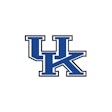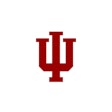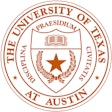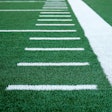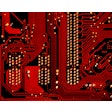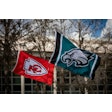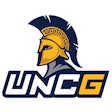|
Copyright 2013 Investor's Business Daily, Inc. All Rights Reserved Investor's Business Daily |
|
August 26, 2013 Monday
NATIONAL EDITION |
|
INTERNET & TECHNOLOGY; Pg. A07
|
|
946 words
|
| U.S. Open Tennis Puts Technology At Center Court; Big Tournament Loves; Its IT Wi-Fi use soared last year; security, communications top tech players this year |
|
TONY KONTZER
|
|
The US Open Tennis Tournament, which starts Monday, as always will feature a lot of action -- technology-wise. But unlike past years, most of the new capabilities don't revolve around the fan experience. Instead, the tech focus this year is on the people who are there to do their jobs, such as the 1,000 credentialed members of the media and the 23,000 employees, vendors, contractors and volunteers who make the event possible. But the group that will see the biggest changes is the field of 256 players -- 128 men and 128 women -- and their coaches. From a secure web portal where they can find gobs of video and statistics to a transportation system designed to ensure that everyone arrives in plenty of time for their matches, players are getting extra love this year from the United States Tennis Association, which runs The Open and the Billie Jean King National Tennis Center in Queens, N.Y., the tournament's home since 1978. "We really want to separate ourselves from the pack in making the players happy," said Larry Bonfante, USTA chief information officer. "We want them to look forward to coming to the US Open." Pumping up the use of technology to better support players' evolving expectations is a growing trend in sporting event IT, says Will Flaherty, director of communications for online ticket broker Seat Geek and its annual On Deck sports technology conferences held in New York and San Francisco. "It's an evolution that you'll see, especially in golf and tennis tournaments," said Flaherty. "It's helpful in attracting top players." Ever since the 1997 opening of Arthur Ashe Stadium, the center court, the US Open has increasingly been a groundbreaker in its use of technology. From its use of real-time video updates to its willingness to employ replay technology that Wimbledon and the French Open resist, the US Open has often been ahead of other sports venues. "They've been so technologically savvy, it's hard to put a finger on any single technology innovation they've done," said Robert Boland, a professor of sports business at New York University's Tisch Center for Hospitality, Tourism and Sports Management. The technology isn't always obvious, he says. If things like the new player transportation system or the event management system Bonfante's crew built three years ago are working right, they go largely unnoticed. "It's amazing how much of the iceberg sits below the water," Boland said. Event Management System That's especially true of the event management computer system, which runs everything from food and beverage inventory to facilities work orders to security surveillance systems. This year, Bonfante's team has added a mobile-friendly version of the system, so users can access it from their tablets and smartphones. "A lot of staff running the event are not tethered to a desk," Bonfante said. "This way, they get a lot more information to make better and more timely decisions." The USTA also aims to similarly untether the journalists tasked with covering a sprawling event in which numerous matches are held simultaneously in the earlier rounds of competition. To save reporters from having to decide which matches to attend, the USTA is lending each a tablet, courtesy of IBM, configured to deliver live footage of every match, current and historical US Open statistics, and live streaming of player press conferences. Bonfante's responsibilities include ensuring security, a job that's taken on special importance. "With events like the Boston Marathon bombing," said Bonfante, "we have to make sure that only people who belong here are here." The USTA's tech staff deploy a credentialing system that, when an event credential or ticket is scanned, ensures that the holder is granted access based on his or her identity, role or seat location. It also pays particular attention to network security, with thousands of attempted hacks expected each day. Bonfante has no choice but to beef up security, says Flaherty, as many sporting events have had to take similar steps since Boston. "Every event organizer has to re-evaluate what their security procedures are," Flaherty said. There also will be new goodies for fans at this year's Open. The most obvious addition will be a new videoboard featuring social media flows, so fans can interact with each other. This will help tournament organizers easily send messages about changes of court assignments and match times. Also, a special promotion for American Express cardholders will enable them to rent a personal device that provides constant feeds from other matches, similar to what the journalists will be using. Perhaps the most important IT investment the USTA had to make in the fan experience this year was a network upgrade. Bonfante said not long ago the facility's network could last three years without an upgrade; now that upgrade occurs annually. The event saw the average number of concurrent Wi-Fi users soar from 6,500 in 2011 to 17,000 last year, and Bonfante expects another significant jump. As many components as Bonfante's team had to wrangle with for this year's tournament, the pace figures to quicken over the next five years, during which time the USTA will oversee $550 million in improvements that will inject the National Tennis Center, and thus the Open, with even more technological capabilities. Bonfante knows major hiccups will occur, but he clearly lives for the craziness of the few weeks before and during the Open. "I've described it as 21 straight days of Black Friday," he said. "Even though you can plan and prepare for everything that can happen, stuff still happens. There's a lot of pressure, and a lot of stress, but it's also an adrenaline rush." |
|
August 23, 2013
|
Terms and Conditions Privacy Policy





















